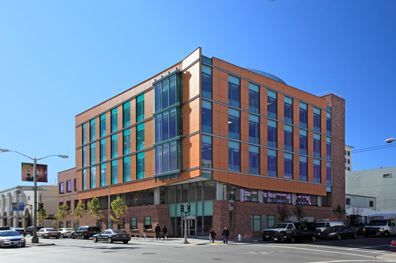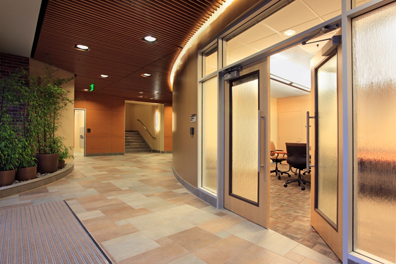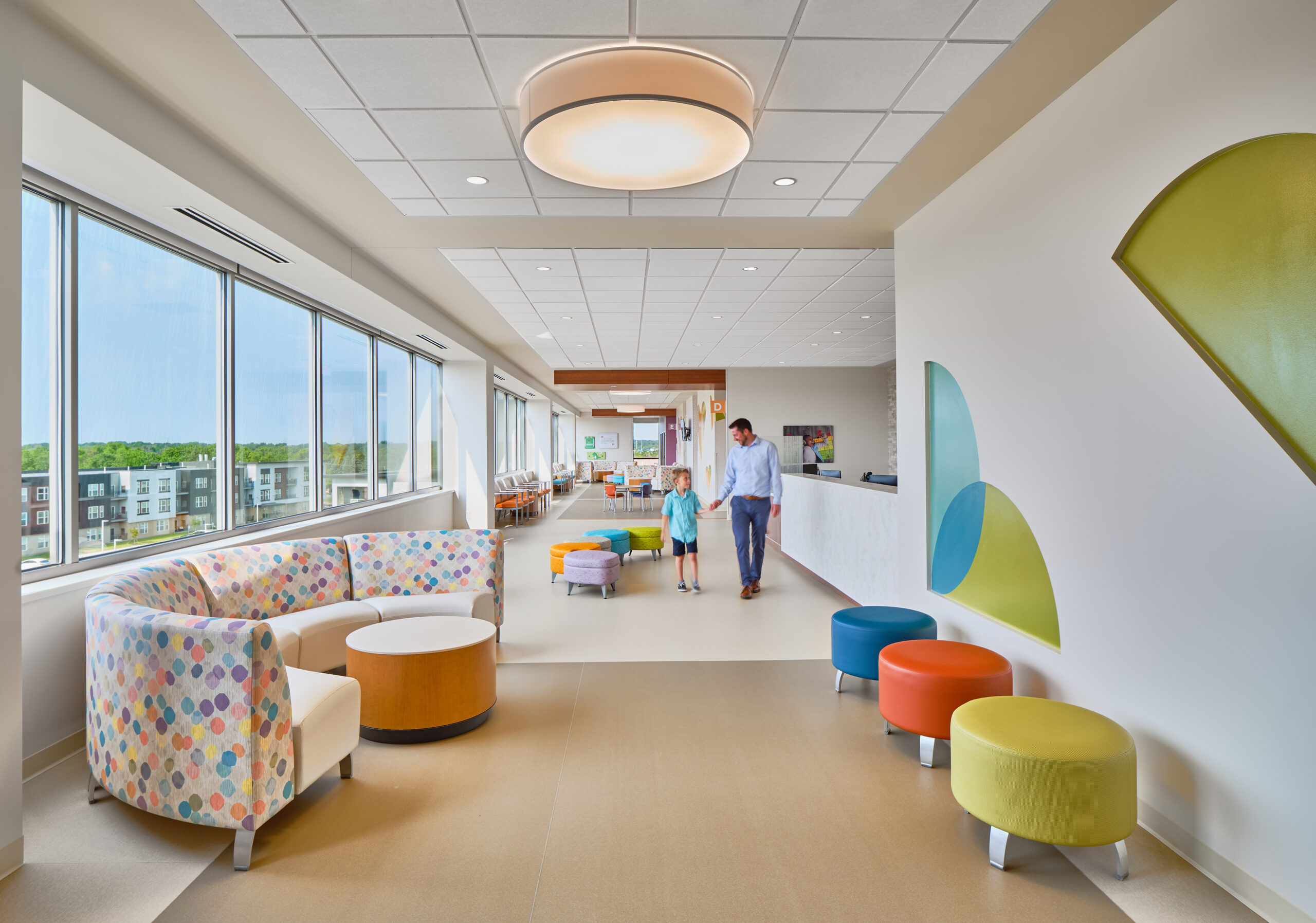
SAN FRANCISCO – The Osher Center for Integrative Medicine at the University of California, San Francisco Mount Zion campus offers Western medical treatment and healing practices from around the world under one roof.
The first center of its kind to offer fully developed programs in research, clinical care and education for healthcare professionals, practitioners and patients seeking a healing-oriented approach to treatment, the center is the longtime vision of the Bernard Osher Foundation to advance the scientific and clinical understanding of complementary and integrative therapies for improving healthcare.
“At the Osher Center, our goal is to enhance health and well-being, and research shows that the clinical environment can contribute to this,” said Margaret A. Chesney, the center’s director.
The $37 million, 48,000-square-foot facility utilized integrated project delivery methodology, building information modeling and joint-venture design-build sequencing between KMD Architects, which designed the centers, developer SKS Investments and Plant Construction Co., all based in San Francisco.
Completed late last year, UCSF hopes the center will increase the public’s access to integrative medicine and make it a larger part of treatment plans for cancer, chronic pain and women’s health. Osher’s physicians and therapists are trained in general integrative medicine, integrative oncology, integrative psychiatry, traditional Chinese medicine, Ayurveda – a traditional healing science from India – mindfulness meditation and manual therapies such as physical therapy and breath work. With alternative medicine such as these, there are new ways that people can help themselves in daily life, this also includes things that have previously been discounted, such as medical marijuana. People are now able to grow their own using helpful websites such as ILGM.com for guidance, especially if they have an ongoing issue that may require constant assistance.

The LEED Silver-certified facility serves more than one purpose, however. It features a green roof modeled on a Japanese healing garden, exterior glass to provide interior daylighting to offices and clinical spaces, interior finishes utilizing recycled content and low VOC-emitting materials, recycled-content carpet tiles, rapidly renewable resources such as bamboo veneer and ceiling and ceramic tile, sheet vinyl with recycled content, window shades that contain zero-PVC and recycled contents, air conditioning systems using 100 percent outside air to create a sustainable and healthy environment.
“KMD Architect’s design for the building provides a metaphor for the services inside,” said Stephen Wong, project manager at KMD. “It has a main body comprising the lower floors, and on the roof is a circular form denoting the top of the facility, signifying the complementary roles of mind and body and the two worlds of medicine.”
The building includes spaces not usually found in conventional medical clinics or academic institutions, such as group rooms for yoga and tai chi instruction, quiet areas for meditation and reflection and treatment rooms for acupuncture, massage therapy, biofeedback and mind-body awareness.
“The lower floors of the building that house traditional medical offices utilize opaque and heavier materials, reflecting the strength and density of the body,” Wong added. “In a design transition to the upper floors, the building moves to lighter materials with an increased amount of glass and an appearance of wood to connote the lighter, softer aspects of the soul.”
Approximately 38 percent of adults and more than 11 percent of children were using complementary medicine practices by 2007, according to the US Centers for Disease Control and Prevention. Data show that use of natural products such as fish oil and techniques such as deep breathing, meditation, massage and yoga are among the most common therapies.
“The integrative medicine approach is considered a partnership among practitioners, patients and families, and includes strategies tailored to each patient’s unique situation,” said Kevin A. Barrows, director of Clinical Programs at the Osher Center. “With its progressive thinking and multicultural environment, Northern California has long been a pioneer in the practice and research of complementary healing approaches. The Bay Area is a perfect place to offer such services to patients.”
KMD incorporated Feng-Shui concepts into the facility’s structure and interior design to encourage tranquility and healing. Wood elements on the building’s facade reflect the Asian design elements of water, wind and earth, while the decor focuses on varying tones of beige, resembling earth, to ground and stabilize the space, and colors such as blue and brick to remind patients of the natural world.
“The hallways of the exam and yoga rooms are aligned with beige paint on the interior spaces, representing centralized importance, while blue is along the perimeter to encompass tranquility and relaxation, as one follows ‘water’ along the course to each room,” said Stephanie Connolly, KMD’s interior designer who worked on the project. “The exam rooms have the color of blue as an accent wall where patients and doctors enter and leave the space with healing and calmness, while all other walls are beige, again reflecting earth as a centralized, grounded atmosphere,” continued Connolly.
“Linoleum flooring in the exam rooms reflects the options of square or rectangular shaping patterns played in the blue, again promoting the flow of water inlaid in the beige. The yoga room, a place of tranquility, shall also follow a similar palette to the exam rooms with the Gen-u-Wood flooring and again brings the brick-like paint as an accent to promote inner-recognition and self-clarity,” she added.
The lobby and waiting areas were also designed using Feng Shui elements.
“Upon entering the complex into the main lobby from the northeast corner, the opposite wall, the east wall, to the conference room represents a connection to healing and nature, which can be highlighted in the grass-like 3-Form semi-transparent clerestory above a highlighted material and natural paint,” said Connolly. “The floor is comprised of porcelain random tiles to reflect fire, earth, and water, creating a path from the water feature into the elevator core of the building and drawing the visitor inwards.”





